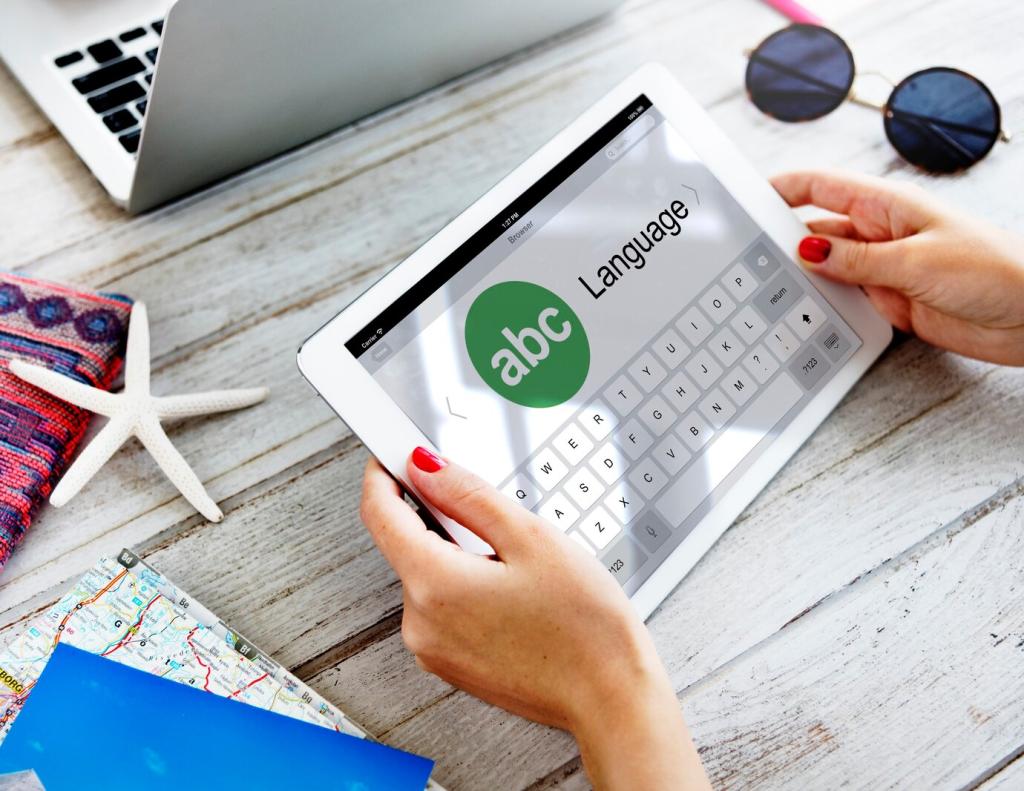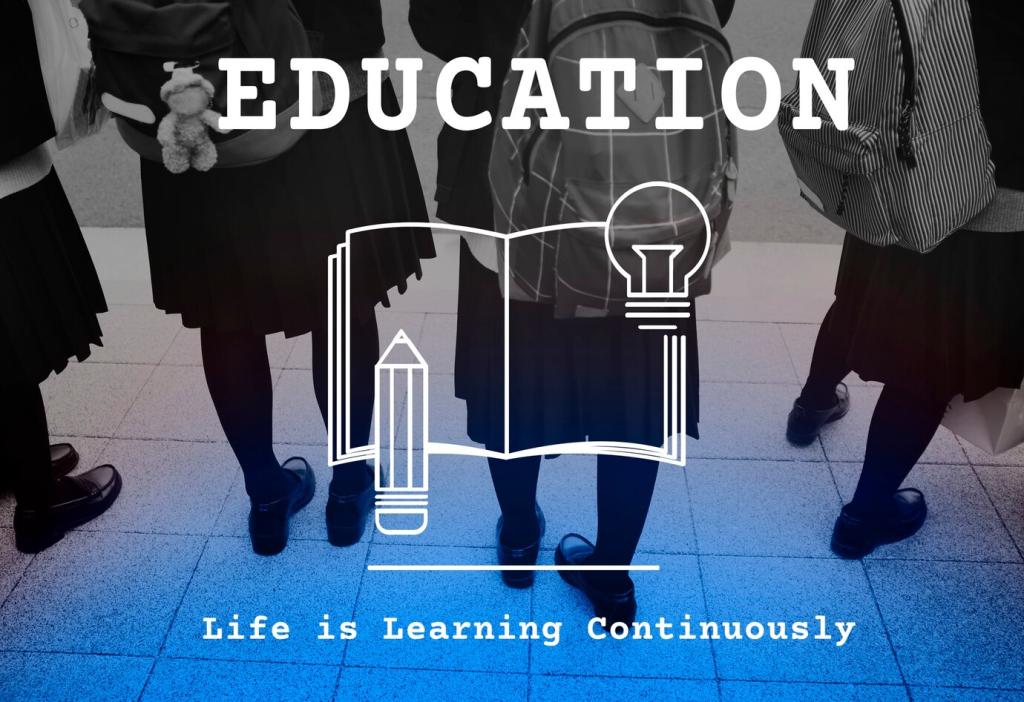Virtual Reality in Language School Curriculums: Immersion That Sticks
Selected theme: Virtual Reality in Language School Curriculums. Step into truly immersive practice where learners rehearse real conversations, navigate cultural spaces, and build confidence safely. Read, respond, and subscribe to stay updated on research-backed strategies and classroom stories that make virtual worlds a practical, equitable part of everyday language teaching.

Why VR Belongs in the Curriculum
Immersion that Lowers the Affective Filter
In VR, learners speak to virtual shopkeepers, classmates, or guides without the fear of a public audience. That privacy and presence reduce performance pressure, helping shy students participate more often. Share your strategies for encouraging hesitant speakers; we’ll feature practical tips from your classrooms in future posts.
Context-Rich Input Creates Memory Hooks
Words learned while haggling in a virtual market or ordering tea in a café come tied to sights, sounds, and actions. Those contextual anchors strengthen recall. Have you noticed better retention after field-trip style lessons? Comment with your examples and we’ll collect proven scenarios educators can replicate.
More Practice Minutes, Less Setup Friction
Well-designed VR modules minimize transition time and maximize speaking turns. Students rotate quickly, rehearse targeted phrases, and get immediate feedback. If you have time-on-task data from pilots, please share. Together we can benchmark realistic gains and build a case your administrators will understand.
Start with Can-Do Statements, Not Gadgets
Define the communicative tasks first: greeting a host, asking for directions, resolving a billing error. Then build the virtual scene around those outcomes. Post your favorite can-do statements below, and we’ll suggest scene elements and prompts that fit each proficiency level effectively.
Match Scenarios to Proficiency Bands
Beginner scenes emphasize predictable exchanges and visual scaffolds; intermediate scenes introduce ambiguity and negotiation; advanced scenes test nuance and register shifts. Share your learner profiles, and we’ll brainstorm scenario variations that scaffold challenge without overwhelming students or overcomplicating lesson prep.
Classroom Logistics, Safety, and Accessibility
Set up stations: one headset user, one partner coaching with prompt cards, and a third student capturing notes. Rotate every few minutes so each learner gets equal speaking time. Post your timing templates and we’ll compare models that balance engagement with classroom realities.

Teacher Preparation and Ongoing Support
Micro-Credentials and Coaching that Respect Time
Short, focused modules—thirty minutes on safety, thirty on scenario facilitation—fit into planning periods. Pair new adopters with a coach for their first two lessons. If you’re piloting mentorship, tell us how you structure observations; we’ll feature your approach in a follow-up guide.
Reusable Lesson Blueprints Save Prep
Blueprints include objectives, prompts, target phrases, differentiation tips, and reflection questions. Plug in your theme—travel, school, work—and run. Share one unit you’d like converted to VR; we’ll draft a blueprint and invite subscribers to iterate with you publicly.
Peer Observation Inside and Outside Headsets
Colleagues can observe facilitator language, student turn-taking, and coaching moves. Record short clips (with consent) for debriefs. Post the observation checklist you use; we’ll compile a community version teachers can adapt across different languages and grade levels.
Assessment, Feedback, and Data Ethics
Performance Rubrics that Reward Interaction
Assess communicative strategies, repair moves, and clarity under pressure—not just perfect grammar. Encourage risk-taking and negotiation. If you share a rubric, we’ll offer a VR-specific variant that accounts for multi-modal cues like gaze, gesture, and turn management.
Evidence without Surveillance Creep
Capture minimal necessary artifacts: short audio excerpts, screenshots of completed tasks, and self-evaluations. Obtain informed consent and store data securely with clear retention timelines. Tell us what your stakeholders need to feel safe and respected; we’ll draft template language you can adapt.
Reflective Practice that Sticks
After each session, have students journal, annotate a transcript, or record a debrief message. Reflection consolidates gains and highlights next targets. Share your favorite prompts, and we’ll curate a reflection bank organized by proficiency level and communicative function.


Cultural Competence Through Virtual Encounters
Recreate a morning market, a family dinner, or a transit hub with ambient sounds, signage, and small rituals. These micro-details teach pragmatics and cultural awareness. What scenes would your learners benefit from most? Nominate them, and we’ll prioritize community-requested builds.
Cultural Competence Through Virtual Encounters
Teach turn-taking, eye contact norms, and indirect requests through guided practice. Students rehearse softeners, honorifics, and gestures that audio-only drills miss. Share your most teachable moments from cultural lessons; we’ll map them to VR prompts that encourage sensitive, respectful interactions.
Equity, Budget, and Sustainable Rollout
Start with 360° videos on phones, layer in cardboard viewers, then add a small set of headsets for high-impact tasks. If you’ve created effective low-tech scaffolds, tell us; we’ll feature them so programs with limited funds can still benefit.


Equity, Budget, and Sustainable Rollout
Centralize headsets in a lab or mobile cart and sign up classes in weekly blocks. Rotate groups through targeted modules. Show us your schedule and staffing model; we’ll publish sample calendars others can modify to fit their bell schedules.
Student Stories from Early Pilots
Aya Finds Her Way in a Virtual Market
Aya froze during role-plays but thrived in a virtual bazaar, practicing price negotiations while her partner coached. Her post-lesson reflection showed new phrases and higher confidence. Do your quiet students shine in VR too? Share a moment we can celebrate with our community.
Marco Negotiates a Lease with Grace
Marco rehearsed a rental conversation, managing misunderstandings politely. He learned to request clarification and confirm details. His teacher noted fewer English fallbacks in later classes. Tell us about strategic moves your students learned; we’ll compile a list of transferable phrases across scenarios.
Fatima Speaks Up During a Virtual Tour
In a museum tour, Fatima asked spontaneous questions and paraphrased complex descriptions. Her classmates noticed and echoed her strategies. If a VR moment sparked peer-to-peer learning in your class, describe it; we’ll surface student-led techniques that build collective confidence.

Your First 30 Days with VR
Week 1: safety, norms, and a short tour. Week 2: beginner scene with clear outcomes. Week 3: assessment and reflection. Week 4: iterate and expand. Post your tweaks to this cadence, and we’ll publish a community-tested version with real classroom notes.
Your First 30 Days with VR
Ask questions, swap scenarios, and co-design rubrics with peers who teach similar levels and languages. Your voice shapes what we test next. Comment with your role and context, and we’ll connect you to others building VR units this term.


